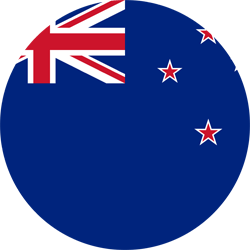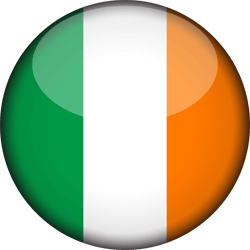
Study Abroad Consultants |
|






 |


When it comes to higher education in abroad, USA tops the list of best countries around the world. USA has the largest populations of international students, and 4% of students enrolled with higher education are international students. These figures continue to grow every year. Before we give an account of the best universities, major offered and study visa process for USA, let’s know quick facts about the country:
Capital: Washington, DC
Currency: United States Dollar ($) (USD)
Largest City: New York
National Language: English
President: Barack Obama
Total Area: 9,826,675 km2
Population: 321,034,355 (2015 Estimate)
Calling Code: +1
Cost of Living: $700 -$1000 per month
USA welcomes students with every interest starting from Engineering to Health and Hospitality to sports. American college and universities offer Bachelor and Master Program to the students in various study areas. Major study areas are shown in the image:

Good news! Students can now study in USA with or without IELTS. Some universities, like Liberty University, are inviting students on “without IELTS” basis.

American education system is different from the education systems of any other country! Are you planning to earn degree from American university? The US education system offers foreign students most diverse set of education options which may vary from microbiology to film and design. American education opportunities are virtually endless! In many niches and sectors, the American education system offers the most advanced, latest and highly technical programs at the worlds best schools. That is why getting education from an accredited American school and being exposed to the nuances of the US education system is worth an investment for your bright future.
Whether you aspire to study at a top USA university, college, or at a USA ESL, a thorough understanding of how the American education system functions is mandatory. Lets see how exactly the US education system functions.
American children go to school at the age of five years which is called kindergarten. The second year at school is termed as first grade. In America, the terminology grade stands for the score obtained on an exam or in a course, and a year of schooling in primary or secondary school. Primary school generally consists of five years of education.
After completion of fifth grade, they advance to secondary school, which typically consists of seven years, from sixth through twelfth grades. The ninth through twelfth grades are generally termed as high school, at the end of which the high school diploma certificate is earned. The students must acquire a high school diploma prior to admission into university or college. Foreign students must have completed coursework equivalent to American high school and must consider how their selected high school can enable them access to the best colleges.
Students aspiring to attend college or university after completion of high school must attend undergraduate school. These schools offer either a two-year Associate degree or a four-year Bachelor degree in a specific course of study. That course is called the major. Although most schools offering a four-year degree, will accept students who have not chosen a major, all students are required to choose (or declare) a major by their second year at school. After completion of an Associate degree the student can continue to study at a four-year school and finally earn a Bachelor degree.
After obtaining a Bachelors degree student can continue to pursue one out of two types of degrees. One is a Masters degree which is generally a two-year degree that is highly specialized in a particular field. Students willing to advance their education in a specific field can pursue a Doctorate degree, called a PhD. This degree may take between three and six years to complete, based on the course of study selected, the potential of the student, and the thesis being selected. Some courses of study are only available at the graduate level in America. The most popular of these are dentistry, law, and medicine. Bachelors degree is the first requisite to pursue these specific fields.
If you are thinking about USA student visa then you have complete these type of test like:
Average cost of tuition and fees is approx. 10,000 to 22,000 $ per year, depending upon college/university.
Living expenditure 10,000 to 12,000 $ per year.

Visa process for USA is simpler than other countries but its visa tough to obtain. For that student who is fully prepared with the required documentation and interview preparation, the process will becomes easier.
INTAKEFall – August / September Spring – January / February Summer – May / Jun |
To enter the United States as a student, you must apply at a US Embassy or Consulate for a USA student visa. You are required to make an appointment in India to apply for a visa. You can apply for a visa only after you receive the requisite I-20 or IAP-66 form from the institution you have been accepted to. The information outlined below is designed to help you understand the visa process.
F-1 (Student Visa). The F-1 visa is for full-time students enrolled in an academic or language program. F-1 students may stay in the US for the full length of their academic program plus 60 days. F-1 students must maintain a full-time course load and complete their studies by the expiration date listed on the I-20 form.
J-1 (Exchange Visitor Visa). The J-1 visa is issued for students needing practical training that is not available in their home country to complete their academic program. The training must be directly related to the academic program. The J-1 visa obligates the student to return to their home country for a minimum of two years after the end of their studies in the US before being eligible to apply for an immigrant (permanent residence) visa.
The Documents mentioned below are mandatory as per the USA VISA rules.

Students are limited to 20 hours work per week while classes are in session, they may work full time during holiday periods. Work rights are intended only to supplement a student’s income and should not be viewed as the sole source of funds. USA offers many opportunities for international students. USA’s standard of living and education system are among the highest in the world. To study and obtain an USA qualification would be the best investment for your career.
There are 2 types of Employment available to F1 Students while studying or after studies in the USA like:
1. On Campus Employment
2. Off Campus Employment
(a) Curricular Practical Training (CPT)
(b) Optional Practical Training (OPT)
On - Campus Employment:-
· Can work on campus during study time (20 hrs per week).
· Can work full time during vacations (40hrs).
· Curricular Practical Training (CPT) is defined as employment which is an integral part of an established curriculum, including: “alternate work/study, internship, cooperative education, or any other type of required internship or practicum.
· Provides opportunity to gain actual employment experience.
· "An integral part of an established curriculum".
· To be eligible for CPT, student must have completed 9 months in lawful status and currently be in F-1 status.
Part-time CPT: Employment for 20 hours or less per week is considered part-time. You must be simultaneously enrolled in classes full-time in order to maintain lawful F-1 status.
Full-time CPT: Employment for more than 20 hours per week is considered full-time. Please be aware that 12 months or more of full-time CPT will invalidate your eligibility for optional Practical Training. During the academic year (fall and winter semesters), you must be simultaneously enrolled full-time in order to maintain lawful F-1 status.
Optional Practical Training (OPT) : - Please note: On May 10, 2016, DHS replaced the 17-month STEM OPT extension with a new 24-month STEM OPT extension. All existing 17-month STEM science, technology, engineering, and mathematics degrees, and who meet other specified requirements to apply for a 24-month extension after completion of studies.
STEM degrees you obtain in the future: If you enroll in a new academic program in the future and earn another qualifying STEM degree at a higher educational level, you may be eligible for one additional 24-month STEM OPT extension.
For example: If you receive a 24-month STEM OPT extension based on your bachelor’s degree in engineering and you later earn a master’s degree in engineering, you may apply for an additional 24-month STEM OPT extension based on your master’s degree.